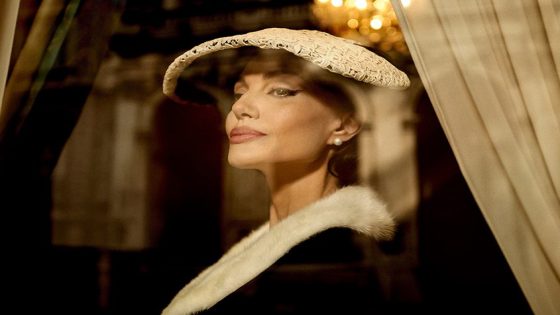As I sat through the North American premiere of Pablo Larraín’s biopic of Maria Callas at the Telluride Film Festival, which stars Angelina Jolie as the famed opera singer, I couldn’t help but recall a line from Al Pacino in “The Godfather Part III” (1990): “Just when I thought I was out, they pull me back in!”
It’s been an awfully long time since Jolie was contending for a statuette — her last acting nomination was for 2008’s “Changeling” and she’s spent the time since then starring in popcorn movies like”Salt” and “Maleficent” or directing films like “Unbroken.” But if you needed a reminder of what a formidable acting talent Jolie is, it’s on display in her transformative portrayal of one of the most renowned and influential opera singers of the 20th century. It’s a chameleonic turn that can best be described as a a kind of cinematic possession. Larraín’s film, which follows Callas in her final days should earn Jolie another invitation to the Oscars—and place her among the frontrunners to take home a second prize to go along with the one she won for 1999’s “Girl Interrupted.”
This is the kind of role Jolie has been waiting for over 25 years, one that fully utilizes her undeniable commitment to a character. In the film’s final moments, her craft becomes physically evident: veins pulsate from her temple, and her hands arch like she’s summoning the thespian warlords to carry her through the anguish Callas may have felt in her last moments. It’s a bona fide “Oscar clip,” if ever there was one.
Read: You can see all Academy Award predictions in all 23 categories on one page on the Variety Awards Circuit: Oscars.
Maria
Courtesy of Pablo Larraín
Jolie’s performance is more powerful because there are clear parallels between her life as one of the most famous people on the planet and the misunderstood icon she portrays. Hollywood loves a comeback story, and this could follow the playbook of Renée Zellweger, who swept the 2019 awards season for playing Judy Garland in “Judy” after being largely absent from Oscar chatter following her win for “Cold Mountain” (2004).
“Maria” is part of Larraín’s trilogy of iconic women, which began with “Jackie” (2016), starring Natalie Portman as Jacqueline Kennedy, and “Spencer” (2021), with Kristen Stewart as Princess Diana. It’s his strongest entry in the group, with a compelling character study penned by Oscar nominee Steven Knight (“Dirty Pretty Things,” 2003). Larraín’s films are often described as “horror biopics,” but with “Maria,” he doesn’t always focus on the psychological torment Callas endured. Instead, he uses a fantastical musical approach, which feels refreshing and coincidentally aligns with a year that will see many unconventional musicals, such as”Emilia Pérez” and “Joker: Folie à Deux,” in Oscar contention.
It’s worth noting that while Larraín’s previous efforts earned Oscar nominations for their leading stars, they haven’t secured significant attention from the Academy in other categories. Netflix, which is releasing “Maria,” will try to change that narrative.
This time, the artisans have more to admire, with luscious cinematography by Edward Lachman, who introduced the movie at Telluride alongside Jolie and Larraín. Additionally, Massimo Cantini Parrini’s evocative costumes and production and set design by Guy Hendrix Dyas and Sandro Piccarozzi will all be in the running for one of the five coveted slots. Pay special attention to the makeup and hairstyling race, as seen with the past three winning films—“Poor Things” (2023), “The Whale” (2022), and “The Eyes of Tammy Faye” (2021)—which also won for either lead actor or actress.
With the backing of Netflix, “Maria” may have more muscular legs in the awards race than initially expected, but mixed praise must be overcome. Despite balancing other projects like “Emilia Perez,” “The Piano Lesson,” and “His Three Daughters,” a possible win for Jolie is something Netflix will likely aim for—and could achieve.
Source Agencies

